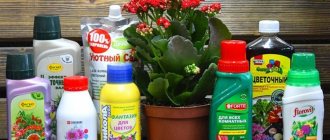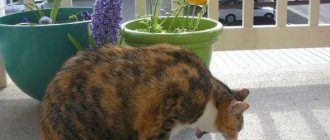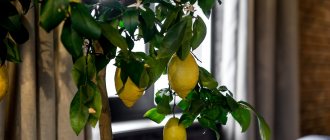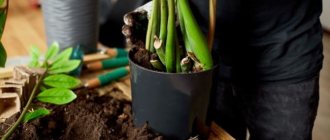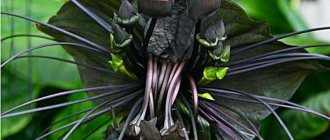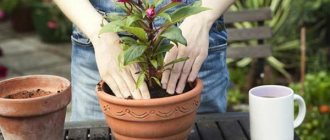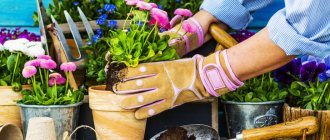Many people grow flowers on their windowsill or in their garden. This activity is enjoyable and brings joy. But a simple hobby can be turned into a family one flower business, bringing a good income.
Let's consider the features of organizing
a business growing flowers at home , its positive and negative aspects, the required investments and profitability.
Pros and cons of business
The advantages include:
- High profits (with stable sales markets);
- Family form of business (if the family enjoys this business);
- Organization at home;
- Possibility to start with minimal costs;
- Variety of color choices;
- Increased demand during holidays;
- The ability to sell goods independently from your own hands.
Possibility of organizing a greenhouse business in cold climates Reducing physical stress when growing hydroponically
On the downside:
- High competition;
- Seasonality factor;
- Having the necessary knowledge on growing and caring for flowers.
As you can see, there are much more advantages than disadvantages . You just need to study specialized literature and choose a niche that is not occupied by competitors, or stand out from them with an original idea. And with the help of two or three selected areas of the flower business, you can compensate for seasonality.
It should also be taken into account that the flowers will need to be looked after and some work done: planting plants, transplanting seedlings, watering and propagating them, irrigating and fertilizing the soil, treating against larvae of pests and diseases, moistening the leaves, pruning and staking.
Crassula
You may know this plant under the name money tree. It is easily propagated vegetatively (part of a twig). Growing a fat plant is also easy - its requirements for conditions are minimal. You may place the crop far from the window or even forget to water it. The money tree does not have flowers, but the rounded green coin leaves look attractive.
There is a popular legend associated with the second name of the plant. According to her, the money tree brings financial luck. The higher and more spreading it grows, the better. There is an opinion about the positive impact of the fat woman on the emotional atmosphere in the house.
Registration of a flower growing business
If you are ready to carry out the tasks of growing and caring, then the idea of a flower business is for you. Keep in mind that the business will have to be registered:
- For small farms, the form of private household plot . Does not require payment of taxes, but will have to be sold through resellers;
- Individual entrepreneur is suitable for a small business. Provides for any sales options, but you will need to pay a 6% tax;
- a KFK for large volumes; it also requires payment of a tax of 6%.
Chlorophytum
Also, only the leaves are decoratively valuable - long lanceolate plates with uneven color. Chlorophytum is a purifying plant for the air in the room. At the same time, it does not require regular watering. Greens accumulate and retain moisture.
Sunlight is also not necessary for a spreading bush. Chlorophytum is even grown on the closet. There are several decorative varieties of culture. If you choose a specimen with a beautiful border or stripes on the leaves, it is still better to give it normal lighting. Only under these conditions will the greenery be bright and its decoration clear.
What flowers are more profitable to grow for sale?
The most profitable flowers are tulips, lilies, crocuses and roses. For example, with a crocus price of 10-30 rubles. for a bulb and a growth period of 3-4 months, its market value will be 250-300 rubles. a piece. By calculating the income from each plant, we get a round sum.
In addition, these species have a variety of varieties and a regularly updated selection range. Thanks to this, you can quickly respond to changing flower trends and offer current varieties.
It is more profitable to select plants that require the same growing conditions . When choosing flowers, be guided by their market demand for the holidays:
- Prepare carnations for February 23 and May 9;
- Mimosas, crocuses and tulips are needed by March 8;
- Daffodils by May 25 at last call;
- Prepare gladioli and chrysanthemums for September 1;
- Roses, peonies, orchids and lilies are in demand at any time of the year.
From the wide variety of color options, you can choose the one that suits your conditions.
Growing indoor plants
The most popular flowers of this group: aloe, anthurium, dracaena, begonia, azalea, geranium, cacti, camellia, lemon, orchid, ficus. Most of them breed at home, allocating a separate room. At the same time, they focus on plants that are beneficial and do not emit harmful substances for humans.
Grow indoor flowers in pots. Care consists of watering, fertilizing, maintaining an optimal microclimate.
The cost of the plant will depend on its appearance and size. The average price for them is 300 rubles . If you sell a thousand pots a year, you can earn 200 thousand rubles. By dedicating a separate room or greenhouse, you can earn more.
Growing flowers in a greenhouse
Greenhouse flowers include mimosas, peonies, carnations, roses, daffodils, tulips, crocuses and other plants . Taking care of them is not easy, but with the right approach you can get a high profit of 600 thousand rubles. in year.
Growing medicinal plants
Open ground cultivation is suitable for this format. The season lasts from early spring to autumn. Income depends on the type of flower and the complexity of care.
They grow: lemon balm, chamomile, ginseng, sage, elecampane, rosemary, cornflower and other flowers for tea infusions and ointments . They are easy to care for and can be sold both fresh and dried.
One hundred square meters of land will produce 15 kg of plants worth 500 rubles. To prepare 30 acres it will cost about 100 thousand rubles. plus 15 thousand rubles. for the maintenance of the site. Thus, the net profit will be 210 thousand rubles.
Growing seedlings
This business is seasonal. Seedlings are grown in greenhouses from February to May , and sold until mid-June. This is how viola, pansies, lobelia, and azarina are bred . One small greenhouse can generate revenue from 20 thousand rubles.
Growing seedlings
The seedling business is quite simple, but profitable. Thus, the cost of rose seedlings varies between 200-400 rubles . And one square meter can produce several dozen seedlings per year.
Growing bulbs
The most popular are tulips, the bulbs of which can be grown in open ground.
To decide which direction of the flower business to choose for yourself: you need to decide on a place for planting: a garden plot, a greenhouse or a separate room in an apartment.
Decide what types of plants to grow: indoors, greenhouses or outdoors; study the market demand for flowers to assess profitability; pay attention to the level of competition.
Please note that there are flowers that require a one-time investment in planting material. There are some for which you will need to purchase it annually, and for some types it will be necessary to purchase a small amount of material. Below are the average prices for individual plants:
- Seeds for seedlings cost 40 rubles. for 300 pcs;
- Seeds of indoor flowers - from 1 rub. up to 40 rubles;
- Rose bushes - from 300 rubles. per piece;
- Tulip bulbs – from 20 rubles.
When choosing planting material, pay attention to its quality and appearance.
Dracaena
Dracaena is a kind of indoor palm tree. It is not one of those, but it resembles an exotic culture in appearance. Bunches of narrow decorative leaves are collected at the ends of the branches. In a spacious living room, a succulent shrub will take its rightful place in a large tub. Provide it with enough heat and light, periodic spraying of greenery and air to get full-fledged juicy greenery.
In home floriculture, the most in demand is dracaena bordered. Its subspecies:
- Tricolor. The leaf has reddish and yellow stripes. From the side, the greens have a golden tint.
- Colorama. The edging has a soft scarlet color and occupies almost the entire leaf area.
- Bicolor. The dark leaves are outlined with a thin pink stripe.
- Magenda. The border is crimson or red.
Where to grow flowers
The volume and types of plants grown are determined by the location of the business. If this is a dacha or a house in a village, it is better to build a year-round greenhouse. Growing indoor flowers is suitable for an apartment. If you have a plot of land, you should grow medicinal herbs and flowers for open ground.
If you choose the greenhouse method, you can install a seasonal or winter version:
- A seasonal greenhouse of 120 square meters costs about 200 thousand rubles . It will allow you to grow plants from February to November with the installation of additional equipment;
- An equipped all-season greenhouse will cost 450-460 thousand rubles . Any flowers are suitable for growing in it, including those traditional for spring holidays. A hydroponic system will help reduce labor costs;
- If you like growing indoor flowers, then you will need about 30 thousand rubles to equip your living space .
- To equip a separate business premises you will need 250 thousand rubles .
It is not necessary to use large areas at once ; 30 square meters is enough to start with. Having received the first experience and results of activity, it will be possible to think about expansion.
Gloxinia
A low-growing plant with a rosette of large flowers is appropriate in a bedroom setting. Its petals are velvety to the touch and delight the eye with a pleasant color. The buds combine shades of lilac, purple, pink, crimson, and white. There are mono-color and two-color options. Do you want to grow gloxinia?
Try to provide her with comfortable conditions:
- good diffused sunlight;
- abundant watering (in a tray);
- intensive spraying of the surrounding air, especially during active growth.
Flower markets
To sell your products, you need to develop a marketing program, which includes an analysis of sales markets in the form of wholesale and retail flower shops.
The implementation plan depends on the size of the business. The smaller it is, the easier it is to sell the product. Sales options:
- Selling through your own website and social networks;
- Sales to large flower shops;
- Open your own flower shop;
- Sales for the holidays in a shopping center or central city street;
- Sales through resellers;
- Sales from the greenhouse;
- Selling from a car.
Remember: by declaring yourself and your business, by advertising, you make money!
Violet
This indoor flower is also known as Saintpaulia. It is distinguished by a huge variety of varieties: in nature, there are species with different colors of petals, type, shape and shade of leaves. One thing is constant - their greens are dark and uniform.
During flowering, the violet produces a bright rosette. Saintpaulias are grown in regular or hanging pots. You can get a new copy to increase your window plantation with just one piece of paper.
Attention! Violet loves to bathe in diffused sunlight, but direct rays are contraindicated for it.
Purchase of seeds and bulbs
The future harvest of flowers depends on the quality of seeds and seedlings. Therefore, this important issue must be approached with special responsibility .
Suppliers of seed material can be found on the Internet, nurseries, and various exhibitions of crop production.
Seeds are purchased from January to May . In this case, both wholesale and retail purchases for testing are possible. Some people collect seeds from their own plants and propagate seedlings themselves, and develop new breeding varieties. Hybrids that are resistant to low temperatures, diseases and pests are popular.
Seeds should be stored in a dark, cool place for no more than one year, since if stored for a longer period they may not germinate.
Cactus
On a windowsill or desktop, a representative of the Cactus family will grow almost without your attention. The plant's homeland is the Earth's equator. Therefore, it takes root well under the scorching sun in conditions of moisture deficiency. Some species bloom beautifully, but this is not always easy to achieve. The cactus is diverse in its types. Plants differ:
- size;
- trunk shape;
- length of spines;
- shape and color of needles.
Attention! There are cacti without needles. There is a species that spends almost the entire growing season under the ground and releases its head only during the flowering period.
Purchase of fertilizers and remedies for pests and plant diseases
One of the stages of starting a business is preparing the ground . To save money, you can use meadow or forest soil. To do this, in early spring, the top layer of soil is removed and wrapped in a roll. Next, it is stored on the site, having previously been unrolled and covered with polyethylene.
The soil is irrigated several times and covered again to warm it up and destroy pests and weed spores. And only after that they are used for planting .
You can replace the soil with hydroponics nutrient liquid. This will simplify the work, although construction will cost 400 thousand rubles.
Fertilizers include mineral ones consisting of nitrogen, phosphorus and potassium, organic and universal in dry and liquid form, observing certain proportions.
The frequency of feeding is once every 10 days.
To combat pests and plant diseases, complex and specialized products are used: fungicides, insecticides of systemic and contact action. They usually buy from wholesale suppliers that they find on the Internet.
Where to start growing indoor plants
You can get popular houseplants for free or for very little money. They are often given away during moves and renovations. They also share the children of the growing collection. It’s worth looking in regional groups like “I’ll give it away for free”, on Avito, Yula or Darudar.
It makes sense to start growing your own garden with simple specimens that do not require special conditions. This will allow you to practice plant growing, learn the principles of care and understand whether it is possible to turn your hobby into a business.
What you need to grow
A hobby does not require many resources and equipment. First of all, this is a place: a separate room, an insulated balcony or large window sills. It is convenient to use the simplest wooden and metal Ikea racks (from 700 rubles) to place pots and necessary equipment. For wintering succulents, cacti, certain types of orchids, and Venus flytraps, a glazed but cool balcony (average temperature +12-+15°C) is suitable.
Equipment
Equipment you need is a phytolamp, a humidifier and a hygrometer.
Some types of indoor plants require more light, while others need natural daylight. The same goes for humidity. Those with aerial roots, such as monstera or phalaenopsis, absorb moisture from the air. Therefore, it is necessary to monitor the optimal level of moisture. A hygrometer will help with this.
Priming
You will also need good soil, drainage and comfortable pots. The soil should be selected individually for each specimen. Some require a more nutritious substrate, while others can grow directly in the stones. Violet soil is not suitable for orchids, nor are pots. Expanded clay is used for drainage. It is placed at the bottom of the container. Drainage retains excess moisture and prevents roots from rotting.
As an alternative or more advanced option, Lechuza-pon substrate is used. It consists of porous materials, which allows it to retain water and release it gradually. Thanks to this, root rot does not occur. The average cost of a 6-liter pack is 900 rubles.
Substrate for indoor and potted plants Lechuza-pon
Another interesting option is the German Seramis primer. It consists of different-sized clay granules. There is also a separate Seramis for orchids: with pieces of tree bark. The principle of operation of the substrate is similar to Lechuza: the granules retain water and gradually release it. The average cost of 2.5 liters of Seramis is 600 rubles.
A huge plus of Lechuza-pon and Seramis: the absence of an earthen component. Thanks to this, the main disadvantages of plant growing disappear: dirty, flooded window sills and soil on the floor after replanting. Both substrates contain a sufficient amount of minerals to eliminate the need to purchase additional fertilizers. They do not require replacement every few years, so they are very economical. Also, when using Lechuza-Pon and Seramis, drainage is not needed: the granules take over this effect.
You can use self-watering pots or a more budget-friendly option - ordinary plastic pots with holes in the bottom. If necessary, the plant is transplanted into another container before sale.
5 tips for getting started in crop farming
- Excess collections are sold in shops at botanical gardens. For the most part, they are planted in the correct, non-transportable soil, well-groomed and not infected with parasites. There are also rare species that are not so easy to get in regular stores. There is also a minus of shops at botanical gardens - the inconsistency of the assortment. But it’s worth going there as if you were on a hunt, looking for unusual and interesting specimens.
- It is best to grow something that easily gets along in one microclimate.
- You cannot place different flowering indoor plants with each other. There is a high risk that they will begin to cross-pollinate. And this entails a change in the color and shape of the flowers, the loss of their original appearance.
- Euphorbia and Kalanchoe can scatter their seeds into other people's pots.
- Succulents need a lot of light to grow well, so you shouldn’t keep them next to tall specimens.
Which plants to choose for sale
It is worth paying attention to rare, unusual and beautiful-looking specimens. Succulents are in great demand: echeveria (echeveria), zamioculcas, crassula, lithops. They are used to create gardens, closed ecosystems, and florariums. With the right microclimate, succulents do not require special care. Their cuttings take root easily and produce roots. There are interesting options for succulents on the Raritet plants website or from Peter Lapshin. Children are often exchanged and offered in groups on social networks, for example, “Cactus Club”.
Varietal violets are popular. They are unpretentious and grow quickly. It is best to consult and select interesting specimens on specialized forums: “Violet Island”. Unusual violets are sold by collectors, for example, Maria Rezankova.
Tall and unpretentious ficuses, chlorophytums, monsteras, zamioculcas, and spathiphyllums are excellent as office plants. They are used for landscaping commercial premises. They can be bought on Avito or in flower sales groups on social networks. They are inexpensive, but with proper care they grow quickly.
An interesting option is growing exotics. You can buy them when you are still a child. In this case, their liquidity increases. For example, atmospheric tillandsias are unusual and attractive epiphytes. You don’t even need soil to grow, and care replaces spraying every few days. At the same time, the price starts from 450 rubles for a child of the most popular species and reaches 3000 for Tillandsia xerographica.
Which phytolamp is better
Most indoor plants require additional lighting. For this purpose, a phytolamp is purchased. Without artificial light it is difficult in the autumn-winter period and in regions with short daylight hours. Conventional incandescent lamps are not suitable, as they require a radiation spectrum close to natural.
Simulation of conditions is obtained by adjusting color temperature and light intensity. Lighting helps growth. It is difficult to grow pelargoniums, cacti, succulents, and hibiscus without a phytolamp. Even shade-loving varieties such as Monstera, Dieffenbachia and Ficus often need additional light.
Phytolamps are:
- Energy saving. Compact size and popular e27 lamp base. However, flower growers say that this is not the best option. Due to its design, an energy-saving lamp emits light poorly. The cost starts from 100 rubles.
- Sodium . Durable, powerful and stable. The main disadvantage of sodium phytolamps is only yellow light. In addition, their flasks become very hot and can even explode if water drops enter them. Price from 900 rubles.
- Induction. Durable, do not heat up, color rendering is close to the spectrum of sunlight. The downside is the high price (from 6 thousand) and high power consumption - 60 watts.
- LED . They consume little electricity, are durable and compact. LEDs provide any spectrum of illumination. A 15 rated watt phytolamp consumes 7-8 watts of energy. Therefore, LEDs are considered one of the most economical solutions. The base version costs from 500 rubles, the linear one - from 2000 rubles.
It is necessary to choose the appropriate form of phytolamp. They are linear (in the form of a long strip) and base. The first ones are convenient to use for plants of the same size and approximately the same type, standing in a row. The second one is more useful for spot lighting.
You also need to choose a phytolamp of the correct spectrum. There are only 3 of them.
- Bicolor spectrum - provides a sufficient spectrum of energy needed for photosynthesis. It is suitable for illuminating both decorative foliage and flowering specimens, for growing seedlings, and to support flowering and growth in winter.
- A full range of . Lamp with a wider range of spectral zones. Slightly inferior to bicolor ones in energy efficiency.
- Multispectrum . Lamp with blue, red, warm white and far red light. Ideal for fruiting and flowering varieties. Indispensable for growing orchids and adeniums.
You need to illuminate no more than 14 hours a day. At night, the lamps are turned off, as the plants need to “sleep”.
Some gardeners make phytolamps themselves using LED strips from AliExpress. This is a cheap option, but not always successful, because... Often LED strips do not have enough power. However, you can make such a lamp yourself using diagrams from the Internet.
How to choose a humidifier and hygrometer
The hygrometer is hung in close proximity to indoor plants, away from the humidifier. This way the readings will be more accurate than with a built-in device. Next, you need to find out what level of humidity the plants need. It is better not to create indoor humidity above 70-75%, otherwise there is a high risk of mold. The cost of a hygrometer on AliExpress is 150-200 rubles.
There is no need to buy an expensive humidifier. A traditional type option that works on the principle of cold evaporation is suitable. The price starts from 800 rubles.
Growing flowers in open ground
If you decide to grow flowers in open ground, pay attention to the plant variety and the climatic features of the area. Planting is carried out by seedlings or by planting seeds in prepared soil. Cold-resistant crops can be sown in the third ten days of April, and heat-loving ones in May.
Let's look at the features of cultivation using petunia as an example, which can bring the greatest income. It will decorate any area thanks to the variety of colors and shades. Bush petunias can be planted in boxes or flower beds. Pots are suitable for cascading varieties.
The average cost is 20-30 rubles. a piece . The box holds 60 bushes. We get 1800 rubles. from the box. During the year you can sell 200-300 boxes. Plants do not require special care, so maintenance costs will be minimal.
Asters, marigolds, sage, bush chrysanthemum and other popular flowers are grown in open ground.
Pelargonium
The second name of this flower is geranium. Give it light and it will bloom almost all year round. Among the lush greenery, umbrella-inflorescences are formed that are pleasing to the eye in delicate shades of red, crimson, pink, orange, and white. The aroma of geranium is quite thick. The plant is not recommended for growing in a small bedroom or children's room. Strong odors cause fatigue and poor health.
The best place for pelargonium is the living room. Geraniums are most often grown from seeds. They are available in specialty stores. Among amateur flower growers, packaging of multi-colored assorted flowers in one pack is in demand.
Attention! Pelargonium fragrant has a strong aroma. The beautifully flowering species is less odorous, so it is also suitable for the bedroom.
Growing flowers in a greenhouse
As mentioned earlier, all possible plants can be grown in a winter greenhouse. This method brings the most income. A small greenhouse of 120 square meters with an investment of about 950 thousand rubles. with payback within a year will give a profit of 1,190 thousand rubles.
To build a year-round greenhouse you need:
- prepare the site;
- dig a pit - 7 thousand rubles;
- pour a strip foundation - 53 thousand rubles;
- erect a metal frame - 45 thousand rubles;
- cover with polycarbonate - 85 thousand rubles;
- install equipment: infrared lamps for heating, well and irrigation, lamps for lighting - 160 thousand rubles;
- make ventilation using the correct arrangement of transoms.
We take into account the costs of purchasing equipment and garden tools - 80 thousand rubles, planting material - 315 thousand rubles, documentation of the greenhouse - 10 thousand rubles, services of an agronomist - 5 thousand rubles. and other unforeseen costs - 20 thousand rubles. The amount comes out to 800 thousand rubles.
Cyclamen
Do you want to have blooming beauty on your windowsill in the midst of autumn, which is poor in bright colors? Then plant an alpine violet, or scientifically called cyclamen. It is during the cloudy season that it delights with juicy purple, red, white, carmine or pink petals. The rest of the year, the plant is decorated only with elegant heart-shaped leaves with a marble pattern.
Attention! Cyclamen loves the sun and does not tolerate heat or excess moisture. Take these factors into account, especially in the summer.
Flower seedling business
The least expensive option for making money from flowers is growing seedlings. For this, cassettes with cells with a volume of 100-300 milliliters are used, costing up to 1 ruble. or plastic boxes . Disposable glasses are also suitable for containers. For 120 square meters you will need 10 thousand cups worth 10 thousand rubles. or boxes for 45 thousand rubles. These costs will be annual.
For seedlings, special soil is suitable, the cost of which is on average 10 rubles. per liter To save money, it is mixed with disinfected garden soil.
During the first two weeks, flower seedlings are kept in peat, then planted in soil made of fine sand, humus, peat and garden soil in equal proportions. At the same time, the cost of such soil will be 20 thousand rubles.
Proper landing consists of the following steps:
- the container is filled with earth, making grooves or holes, and watered with warm water;
- lay the seeds 0.5-3 centimeters and sprinkle with soil;
- cover with film until shoots appear;
- remove the film and additionally illuminate for 16-18 hours for the first 3-4 days;
- When seedlings grow, daylight hours are shortened to normal.
Seedlings require good regular care and watering with soft water at room temperature. Fertilizing should be done with complex fertilizers every 7-10 days. To minimize the complexity of care, you can initially maintain a distance between the seeds or plant them in cells.
Spathiphyllum (spathiphyllum)
The plant with large glossy leaves is also known by another name - Women's Happiness. Greenery cleanses the air of harmful impurities and has a positive effect on the overall atmosphere in the room. The lanceolate leaves of the crop grow directly from the ground. Snow-white buds appear on long stalks. It is not easy to achieve flowering of spathiphyllum. For this he needs:
- moderate lighting without bright sun and strong shading;
- temperature regime about +22 °C;
- absence of sudden thermal fluctuations and drafts;
- spraying and moderate watering;
- regular feeding.
Availability for sale, ease of propagation and cultivation determined the popularity of the proposed plants among owners of indoor flower gardens. Take advantage of the experience of other gardeners to add greenery and bright colors to the everyday life of your household.
What are your favorite indoor plants?
How much do you need to invest at the start?
So, depending on the idea of earning money, the amount of investment will be different. The table shows approximate calculations:
- Growing in an apartment 30 thousand rubles;
- Growing in open ground 150 thousand rubles;
- Growing in a separate room 250 thousand rubles;
- Installation of a seasonal greenhouse for 120 square meters 200 thousand rubles;
- Installation of a year-round greenhouse for 120 square meters 465 thousand rubles;
- Registration of documents 10 thousand rubles;
- Purchase of work clothes 5 thousand rubles;
- Purchase of equipment 5 thousand rubles;
- Take into account the annual costs of:
- purchase of planting and consumable materials, containers, soil, fertilizers
- water supply and electricity
- paying taxes
Hydrangea
This shrub will be in constant demand due to its decorative properties and ease of care. There are several popular hydrangea varieties with purple, pink and creamy white petals.
Inflorescences can also change the original palette during the flowering process.
It should be noted that hydrangea bushes must be planted in sunny places - this way all their best qualities will be revealed.
Profitability of the flower business
The flower business is one of the most profitable. The markup is 100-150% , and on holidays it reaches 300% . Even with high competition in sales, you can find your niche and make a decent profit.
With a competent approach to organizing a business, you can earn more than 600 thousand rubles. in year. Let's look at the profitability of some types of plants: Variety Initial investment Net profit per year
- Seedlings 127 thousand rubles. 320 thousand rubles.
- Indoor flowers 97 thousand rubles. 203 thousand rubles.
- Medicinal plants 15 thousand rubles. 210 thousand rubles.
- Tulips 720 thousand rubles. 680 thousand rubles.
- Roses 720 thousand rubles. 785 thousand rubles.
- Crocuses 710 thousand rubles. 690 thousand rubles.
Ficus
This flower is classified as a useful species. It purifies the air in the room from harmful chemical compounds and saturates the atmosphere with oxygen. Ficus takes root equally well in any room. If only he was warm and had enough light. Otherwise, the plant will develop poorly and will not be able to fully express its beauty.
Ficus will not please you with flowering in the usual sense of the word. It has beautiful greenery. Several types are available for sale. They differ from each other in color and pattern on the foliage.
Attention! A variety called rubber-bearing is less demanding on lighting. But the capricious Ficus Benjamin is more popular among the people. The variegated beauty is grown in large pots. Its height at home reaches 2-3 m.
Very large plants
Large plants will be very popular this year. In particular, the fig tree is an excellent option.
A student at the Vietnam Police Academy shared how she takes care of her facial skin.
A Brazilian travels 36 km by bike every day to take his loved one home.
Rare shot: Viktoria Isakova showed her grown-up daughter from Yuri Moroz (new photo)
Spectacular plants that look more like indoor trees will become an important part of the interior design.
Zamioculcas
Zamioculcas is a member of the araceae family and is the only plant in its genus. Exotic plantings have become a popular indoor crop relatively recently, since the early 90s of the last century.
The plant is popularly called the "dollar tree", probably due to the color of the leaves or the configuration of the trunk. It has small leaves of a beautiful oval shape, hard, leathery, capable of conserving moisture in difficult times. When designing an interior, it will be extremely successful to use zamioculcas - this is evidence of refined taste and adherence to fashion.
